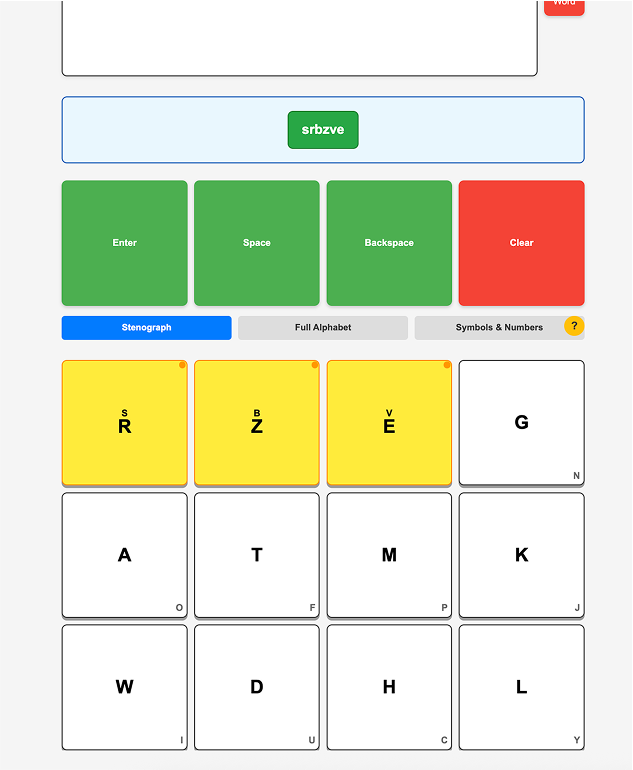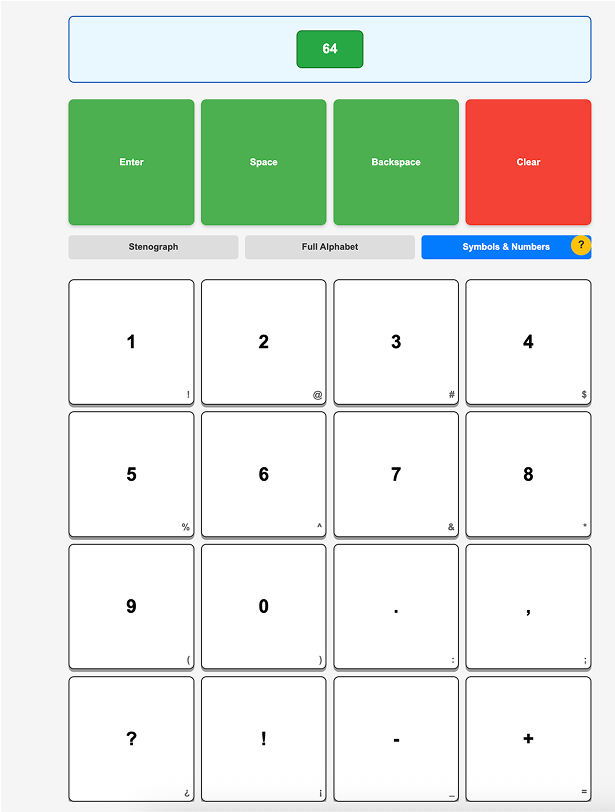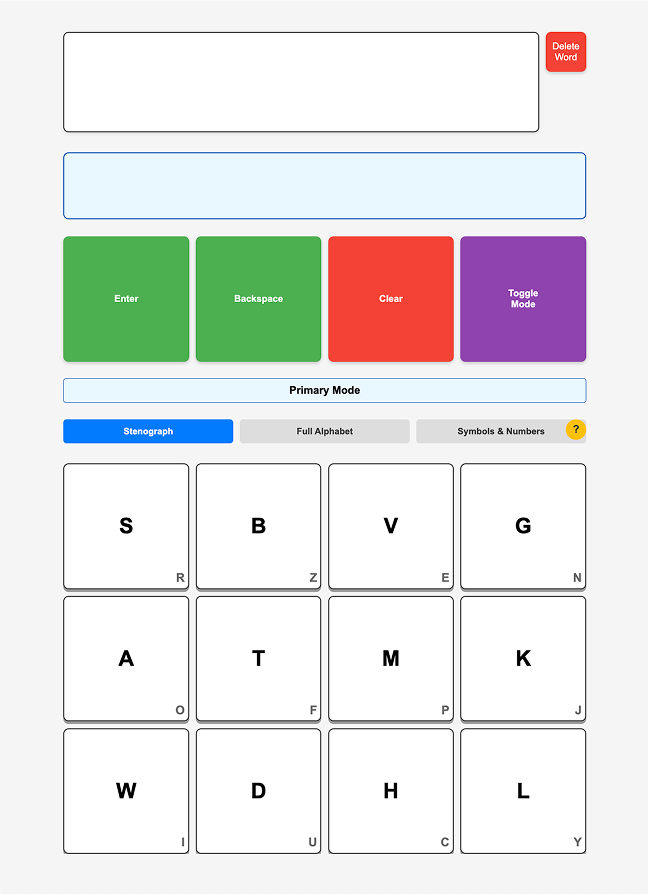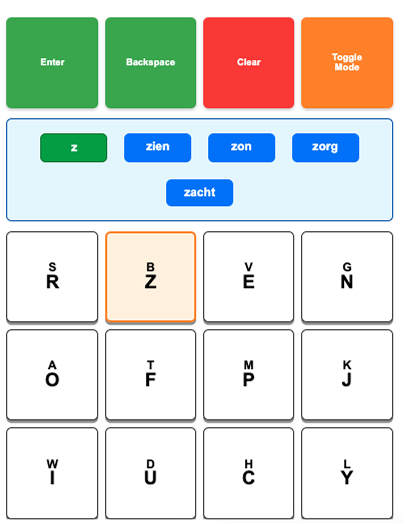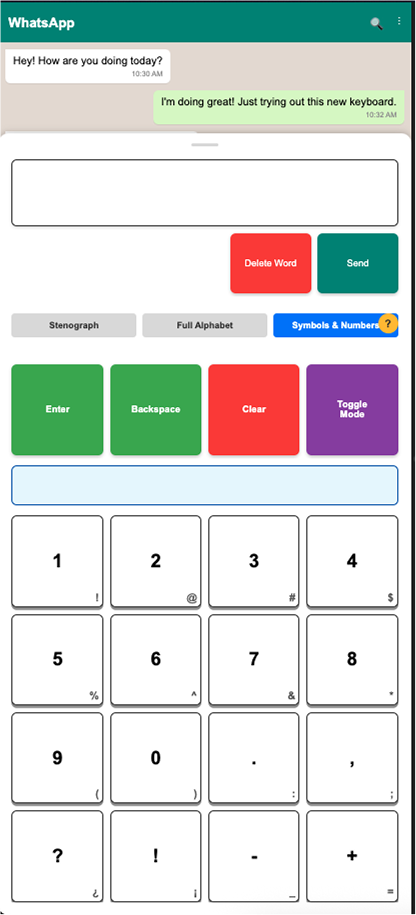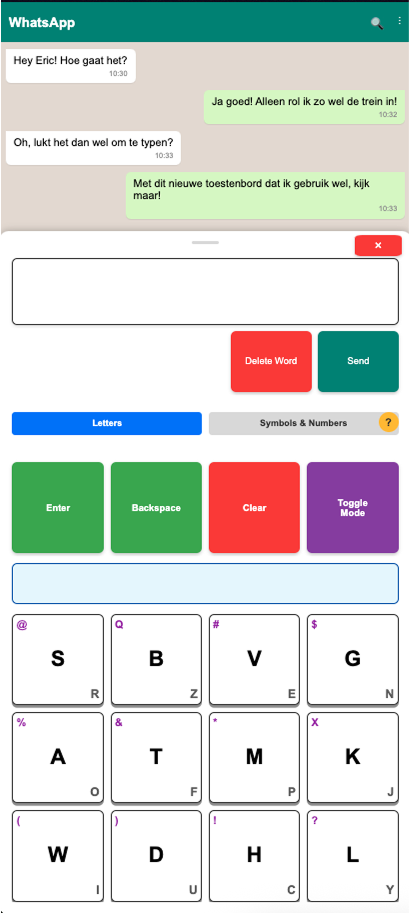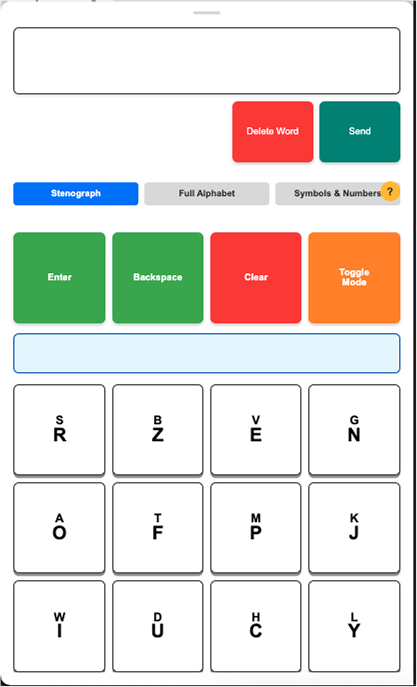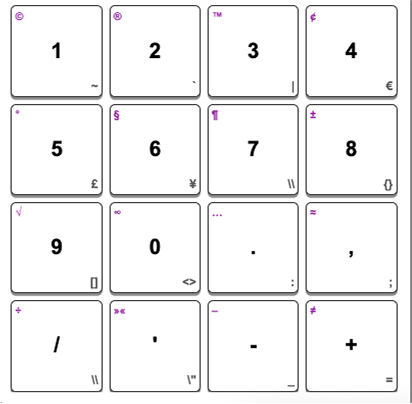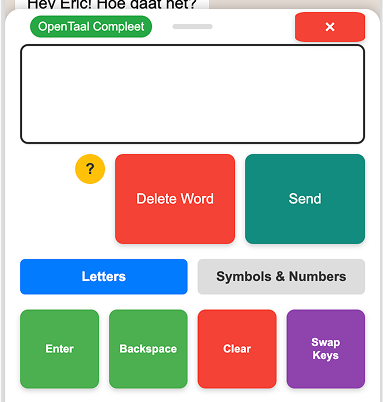Research & First Ideation
To design a custom keyboard for Eric, I first needed to understand which parts of a standard keyboard were difficult for him and which features he actually found useful. After our initial meeting, I explored various input methods but concluded that a touch keyboard would still be the most practical solution. From there, I focused on single-touch keyboards and developed a first prototype. This prototype includes the 12 most commonly used keys in the Dutch language. Each time a key is pressed, it’s added to a word creation bar, allowing words to be formed one letter at a time. Moving forward, I plan to add a word suggestion feature to speed up sentence creation and improve usability.

